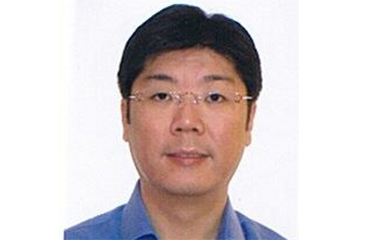Lim Shrimp CEO details plans for giant indoor sea cucumber farm

Rising water temperature due to climate change is devastating sea cucumber stocks in the traditional breeding grounds of northern China, according to the builder of a giant new indoor farm in northerly Liaoning Province.
Djames Lim is CEO and chief aquaculture officer of Lim Shrimp Organization, which has invested USD 25 million (EUR 22.6 million) in his group is billing as the “world’s largest indoor temperature-controlled, multi-stack, multi-story sea cucumber culture project” at the Yingkou Free Trade Industrial Zone. The indoor ambience temperature at the Yingkou facility is controlled at between 16 and 18 degrees Celsius, with the temperature of the recycled water also automatically controlled. Lim envisions four harvests per year. With its background in social enterprise in developing countries, Lim Shrimp Organization also has facilities in Hainan Province and in Shandong.
Lim spoke to SeafoodSource about the new facility, the future of his company, and the changing face of China’s aquaculture sector as Chinese authorities have moved to shut down low-end aquaculture sites across the country on environmental grounds.
SeafoodSource: Given all the uncertainty about aquaculture in China, how did you raise the financing for this venture?
Lim: Money was raised through internal funding and via contractor negotiations that mean we pay only after completion, and pre-sales of factory units.
SeafoodSource: Was it easy to get buyers for your sea cucumbers? Who are your main customers?
Lim: The demand is huge and the demand is more than supply. We have been approached by many buyers already [for our new facility’s supply]. We have normal traders and online e-commerce contact us.
SeafoodSource: Most Chinese aquaculture farmers are unable to access financing for a major project like yours. Do they simply go out of business?
Lim: Most of the farmers are being handsomely compensated by the government for their loss of land if the government decides to not renew their [lease] rental. They can chose to invest that compensation into smaller high-tech farm. We have engaged quite a few of them and they are interested in buying our units jointly.
SeafoodSource: You mean they want to form a club or cooperative to buy your technology? Or you are engaging them as a social enterprise? Will you also have to train them how to use it?
Lim: Yes, they are forming a co-op to buy our units and we will teach them how to culture. They can also choose to rent the unit back to us to operate. This is a semi-social enterprise in upgrading their technology and aims to increase their income and create new jobs. We will train them and guide them along the way. In fact, the Yellow Sea Marine Research Centre [part of the China Academy of Fisheries] will be stationed in our LSO [Lim Shrimp Organisation] Yingkou Seatopia to provide R&D and training to the farmers.
SeafoodSource: Are larger feed companies, state-owned companies, and other conglomerates with deeper pockets moving into aquaculture in China as smaller farms are being shut down by the government?
Lim: Many large companies are coming into this field. They have the financial power.
SeafoodSource: Why are you the only company able to get insurance for your sea cucumber farm? Many insurance companies are worried about aquaculture after scandals at major listed Chinese aquaculture companies over loss of stock. So how did you convince them to insure you?
Lim: We have a long history in aquaculture since the early 1980s. We are one of the largest players in the world. We designed, built and operate the largest shrimp farm in the world located in Lampung, Indonesia. Our standard operating procedures [are] tight and risk aversion is acceptable to the insurance company.
SeafoodSource: You have previously said that sea cucumber production in Liaoning has fallen by 70 percent due to new government environmental rules. Has this driven prices upwards, and if so, by how much?
Lim: Prices have gone up at least 100 percent. As sea cucumber can be stored in dried form, there are still existing stocks available in the market. As I can see, the stock will run out soon and the price will continue to rise.
SeafoodSource: Are higher ocean temperatures affecting the sea cucumber farming industry in China?
Lim: Last year, almost 100 percent of the sea cucumber died in the open farm or open sea due to climate change. The temperature went up so high that all sea cucumber died. The price started to skyrocket since last year. Even if the farmers are culturing indoors, they cannot afford the electricity cost of cooling the indoor farm.
SeafoodSource: So you can afford the electricity cost? Do you have large electricity bills? Do you use solar or any other form of renewable energy?
Lim: We can, because our factory is not the typical indoor factory. Our factory is in fact a giant refrigerator, which as you know requires very little energy to operate as long as there is no leakage in insulation. We do not use a lot of electricity. Currently, we are exploring the use of solar energy and discussing with a few vendors.
SeafoodSource: You don't use antibiotics. Is this unique in the sea cucumber industry in China?
Lim: In all aquaculture in China, antibiotics are their common solution and precaution to survival. We have never used antibiotics.
SeafoodSource: How important is automation in your new facility in Yingkou? Will you require fewer workers than other more traditional facilities?
Lim: Yes, we are automated somehow and need less workers. Our water-monitoring system is computerized. Our RAS system, designed by ourselves, is also automated.
Photo courtesy of Djames Lim






Share